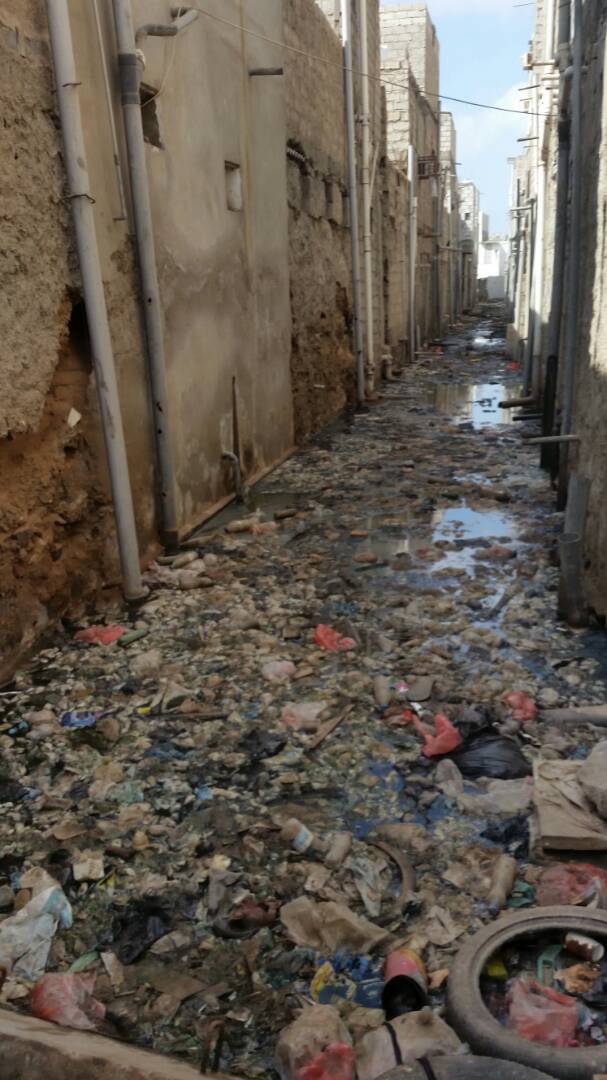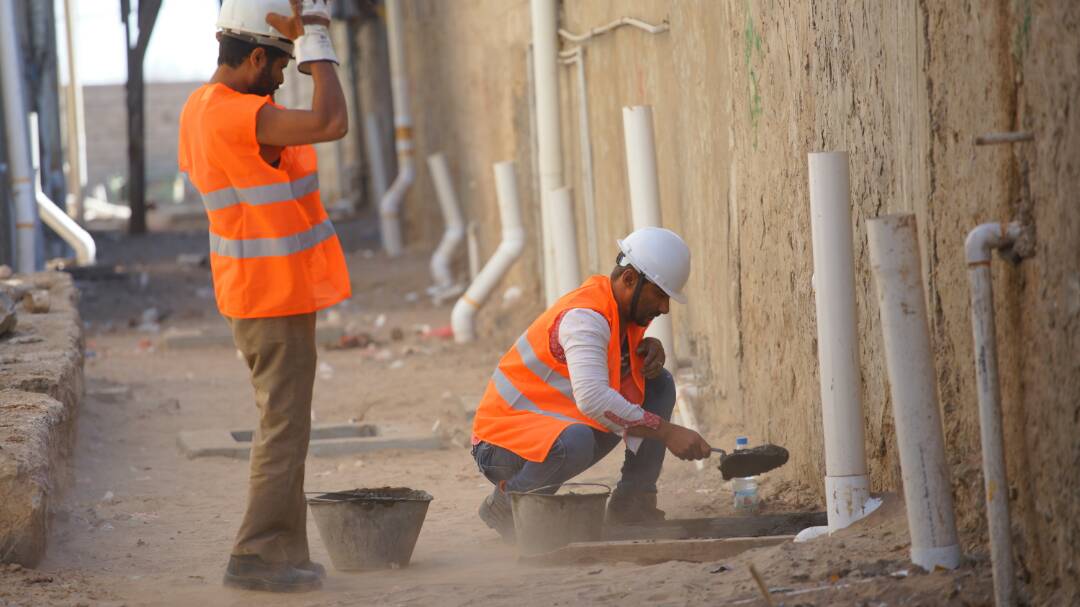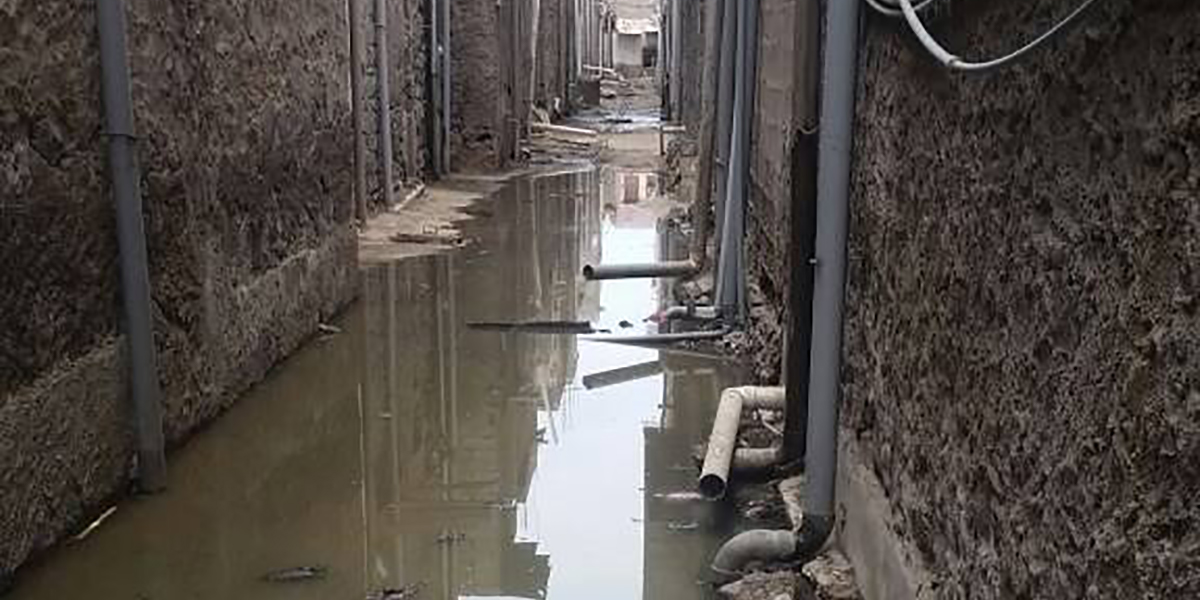After the intervention of the Project works to rehabilitate the sewage network
Satisfaction and reassurance back to the women of Al-Maidan Neighborhood, Aden
Al-Midan neighborhood in the Dar Sa'ad neighborhood in Aden, the people of this neighborhood, children, women and the elderly are suffering daily from the rash of waste water, which becomes a nightmare disturbing their daily life. Getting rid of this suffering is the people's main dream. They are waiting a day in which they can wake up without bad smells, pools of sewage and a night of tranquility without chasing the insects.
 Rehabilitation of the sewerage corridors Al-Midan Neighborhood is the women and men urgent priority . It was sit with them and discussed their needs by social researchers delegated by Public Works Project to identify the needs of the communities and projects to be implemented within the funded humanitarian emergency project in Yemen of the World Bank through the United Nations Development Program.
Rehabilitation of the sewerage corridors Al-Midan Neighborhood is the women and men urgent priority . It was sit with them and discussed their needs by social researchers delegated by Public Works Project to identify the needs of the communities and projects to be implemented within the funded humanitarian emergency project in Yemen of the World Bank through the United Nations Development Program.
Dream come true
The wise man of Al-Maidan Saeed Al-Najashi said, "Rehabilitation of the sewerage corridors by the Works Project saves the people from the daily hardships of people, especially women and children. Many cases of infection of diseases, especially among children, are caused by mosquitoes.
Al-Najashi stresses that : Today the people overcome the suffering with the rash of sewage and fear for their children from infectious diseases, and mobility become easily .... The intervention of the Public Works Project in such circumstances restored hope and alleviated the state of despair, frustration and hopelessness in everything.

Pregnant abortion
Muhaja Salem of Al-Midan, narrates the suffering of women, especially pregnant women from the rash sewage and how it results in diseases, especially the typhoid which was a main cause for the abortion of four women in the neighborhood. After the intervention of the Public Works Project, the state of fear and anxiety among women have achieved the satisfaction and tranquility and brought back the smile on the faces of children.
Malaria, fever and rashes were a common feature of the neighborhood and most of the families were victims of these diseases. Rehabilitation of the sewer system was the saving of families from suffering and tragedy that they could not cope with.




